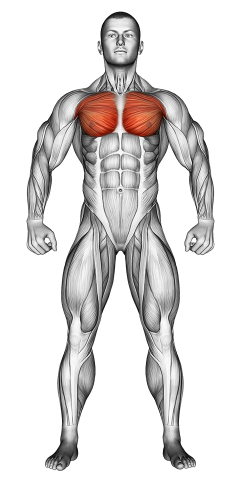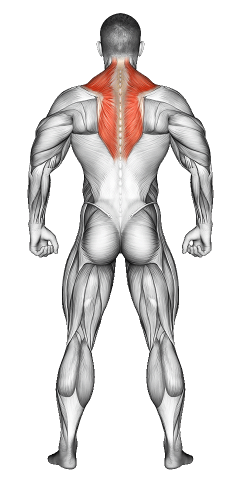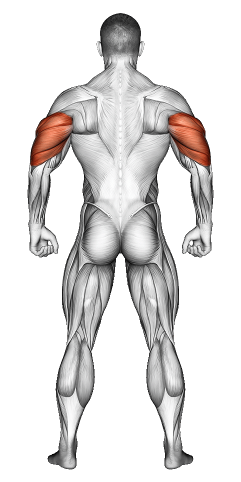Dumbbell Bench Press: Video Tutorial & Exercise Guide

Written By: Claude Michael
Updated: Oct 13, 2024
| Workout | Dumbbell Bench Press |
| Primary Muscle Group | Chest |
| Secondary Muscle Group | Shoulders, Triceps |
| Equipment Required | Dumbbell |
| Force Type | Push |
| Mechanics | Compound |
| Exercise Type | Strength |
| Difficulty | Beginner |
Dumbbell Bench Press: Video Tutorial & Exercise Guide
- 1.Dumbbell Bench Press: Muscle Groups
- -1.1Primary Muscle Group
- -1.2Secondary Muscle Group
- 2.Dumbbell Bench Press: Step-by-Step Guide
- 3.Dumbbell Bench Press: Overview
- 4.Dumbbell Bench Press: Benefits
- 5.Dumbbell Bench Press: Pro Tips & Advanced Techniques
- 6.Dumbbell Bench Press: Progression Plan
- 7.Dumbbell Bench Press: Frequently Asked Questions (FAQs)
Dumbbell Bench Press: Step-by-Step Guide
- Step 1: Lie flat on a bench with your feet planted firmly on the ground. Hold a dumbbell in each hand with your palms facing forward, arms fully extended above your chest.
- Step 2: Engage your core and keep your back flat against the bench. Position the dumbbells in line with your shoulders, with your elbows bent at about 90 degrees.
- Step 3: Lower the dumbbells slowly to the sides of your chest, maintaining control and keeping your elbows at a 45-degree angle to your body.
- Step 4: Press the dumbbells back up to the starting position by fully extending your arms, squeezing your chest muscles at the top.
- Step 5: Repeat for the desired number of reps, keeping a controlled tempo throughout the movement.
Dumbbell Bench Press: Overview
The Dumbbell Bench Press is a classic upper body strength exercise that targets the pectoral muscles, shoulders, and triceps. By using dumbbells, you engage more stabilizing muscles than in a barbell press, allowing for greater range of motion and balance in muscle development.
This exercise is suitable for all fitness levels and can be modified by adjusting the weight. It's commonly included in upper body routines to build strength and muscle mass, improve chest symmetry, and enhance pressing power.
Dumbbell Bench Press: Benefits
The Dumbbell Bench Press is excellent for developing chest strength and muscle size. It allows for a greater range of motion than a barbell press, which leads to more muscle activation. Additionally, the use of dumbbells promotes balanced muscle development, as each side of the body must work independently.
This exercise also engages the stabilizing muscles in the shoulders and core, improving overall upper body strength, posture, and muscle control. It's an ideal exercise for anyone looking to improve their pressing power and upper body aesthetics.
Dumbbell Bench Press: Pro Tips & Advanced Techniques
Keep your feet planted firmly on the ground and your back flat against the bench to avoid arching. Focus on a controlled lowering phase to maximize time under tension. To increase intensity, slow down the eccentric phase (lowering), or add a slight pause at the bottom of the movement before pressing the dumbbells back up. For variety, try alternating presses or using a neutral grip (palms facing each other) to target different areas of the chest and shoulders.
Dumbbell Bench Press: Progression Plan
Beginner
Intermediate
Advanced
Dumbbell Bench Press: Frequently Asked Questions (FAQs)
What muscles do Dumbbell Bench Presses target?
+The Dumbbell Bench Press primarily targets the pectoral muscles (chest) but also engages the shoulders (deltoids) and triceps during the press.
Is the Dumbbell Bench Press suitable for beginners?
+Yes, this exercise is beginner-friendly. Start with lighter dumbbells to practice proper form and technique before increasing the load.
How often should I perform Dumbbell Bench Presses?
+Include Dumbbell Bench Presses in your upper body or chest workout routine 1-2 times per week, allowing time for recovery between sessions.
What common mistakes should I avoid?
+Avoid arching your lower back excessively or letting your elbows flare out too wide. Focus on a controlled movement and keeping your core engaged throughout the press.
How can I make Dumbbell Bench Presses more challenging?
+To increase difficulty, add more weight, slow down the lowering phase, or add a pause at the bottom of the movement to increase time under tension and muscle activation.
Share
Don’t Wish for It, Work for It – Join the FlexXP Newsletter Today!
Thank you for signing up for the FlexXP Newsletter!
This site is protected and the Google Privacy Policy and Terms of Service apply.


